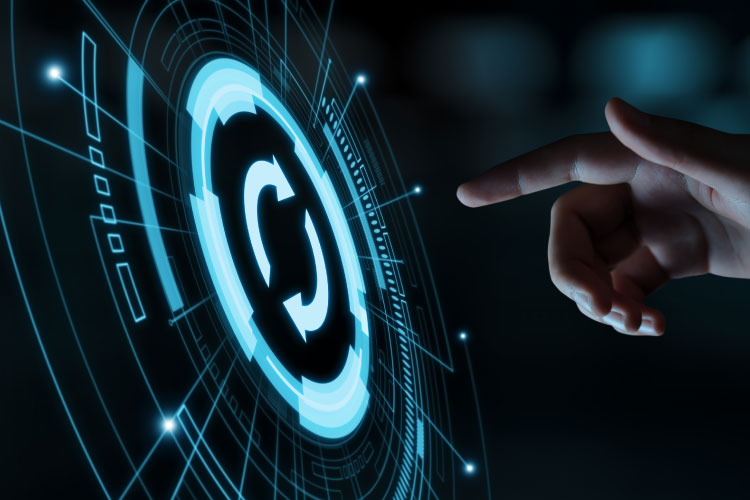The decision journey of modern omni connected consumers has changed radically over the last ten years. The rapid development of technology affects the formation of new points of consumer contact with a brand that are crucial for the consumer decision journey. Therefore, brands have strongly focused on understanding what drives consumer decisions and what affects their purchase journey.

In the last decade, the boom in digital technologies has created omni connected and empowered consumers who know how to use tools and information and have what they want when they want it at the most favourable price. As a response, companies and brands have been trying to develop analytical tools for understanding and interpreting the mass of data in order to understand their consumers and to predict their next moves and efficiently position themselves in the purchase journeys of consumers.
Now that they use new technologies, processes and organisational structures, companies restore the power balance and create new value for brands and consumers. In the forefront of this shift there is a new way of thinking: rather than responding to purchase journeys created by consumers themselves, companies create their own channels that direct consumers and affect their purchasing decisions. Marketing experts increasingly manage the journeys that are becoming a central part of consumer experience with a brand and also important in providing competitive advantage as are products.

Knowing the model of consumer decision journey brings better results
A few years ago, the traditional purchase journey followed the funnel principle which included standard phases of awareness, thinking, evaluation and finally purchase decision. In the traditional model, no contact points are highlighted after a purchase which significantly affect a potential new purchase of existing consumers or purchasing intent of potential users; the model also does not take into account technological possibilities available to consumers. Advanced technological solutions allow new approaches and it is therefore advisable to replace the principle of funnel with a model of the consumer decision journey which puts the consumer at the centre and makes him/her realise new points of contact provided by digital transformation.
In the cyclical process, the consumer decision journey consists of the phases of consideration, evaluation and purchase and three post purchase phases which are enjoyment, advocating and bonding. In the decision journey, a consumer satisfied or bonded with the brand will potentially exclude the first two phases and already at the beginning choose his/her favourite company. The whole process can only take place at one “location” (for example on the internet), and is managed by a consumer.

Consumers give great importance to the opinion of other consumers (WOM). Opinions can be formulated in the physical environment, while in recent years, consumers consider evaluations and recommendations from the digital environment important as well. Last year, iPROM and Valicon carried out research on the purchase journey of the Slovenian consumer which indicated that personal recommendations related to the purchase decision are more frequent than posting comments on the internet (social networks). More than half of those who booked a holiday or bought a car shared their purchase experience with their friends, acquaintances or family. Consumers most frequently mentioned booking the holidays online, where 21 per cent of them provided recommendations, mainly in the form of comments on the website. It is not necessarily characteristic of the model that consumers narrow down their options in each phase, but options can also be added.
The model of the consumer decision journey also includes a feedback loop where consumers continue to assess products or services after the purchase and thus demand a superior experience from their brand. Since responding to customers’ opinions after the end of the process is quite a challenge for brands it is recommended to actively form customer journeys.
How to improve consumer experience on his/her customer journey?
The omni connected consumer is becoming more and more demanding, and the task of the brand is to provide excellent consumer experience in return for good business results.
In today’s communication confusion it is very important that companies add value to a product or a service and focus on the automation of processes, personalisation of interaction and contextual interaction based on innovative communications. The value of experience therefore depends on these four different, but interconnected capacities.
- Automation. In technically demanding automation of processes the emphasis is placed on providing simple, useful and increasingly attractive experience. An example of the automation is mobile banks that allow sharing the accounts among friends.
- Personalisation centres on consumer data collected from past actions or external sources. Knowing the qualities which customers give priority to is the basis of personalisation that brings consumers an individualised and better consumer experience. Personalisation is therefore crucial for achieving excellent results which iPROM provides with its solution called iPROM Real-time Creative. It enables an automated process of producing creative advertising solutions based on collected data on behaviour patterns of digital media users.
- Contextual interaction. It is key to take into account and understand the phase of the consumer journey that later contributes to directing consumers to the next phase of interaction. By applying contextual targeting it is possible to address consumers when they are in the best mood to adopt advertising messages.
- Innovation. The journey with innovations extends the interaction to new sources of the value, such as new additional services which bring extra benefits to consumers. For example, companies can use chatbots that enable consumers to have personalised interaction and quick access to information at all times. They bring numerous opportunities to companies, including acquisition of potential customers, 24-hour availability and increased level of personalisation.

Marketing is changing. The main focus is no longer placed on the product, but the centre of gravity is rather understanding the consumer. Technology is not an end in itself, but it helps companies to create the best consumer experience. Enormous reach, speed of communication and interactivity of digital points of contact on the one hand change the consumer perception of brands. On the other hand, the brands are those who must find ways to meet consumers on the purchase journey in sufficient time and remain an option also upon the next purchase. Welcome to the marketing of the 21st century.
